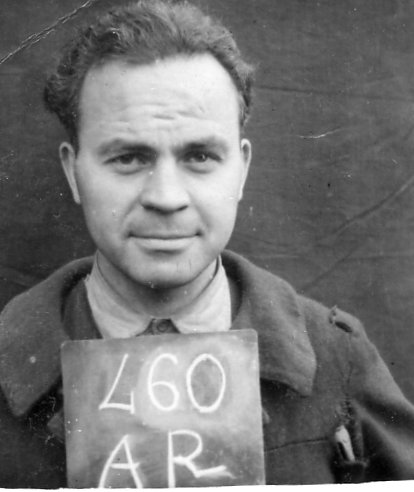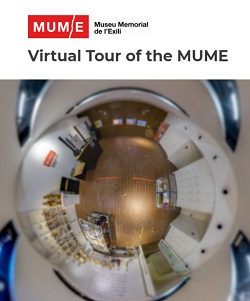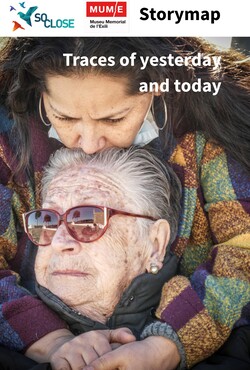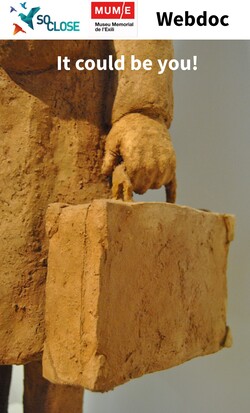Act of receiving the archives of Alexandre Blasi Boher
- Title:
- Act of receiving the archives of Alexandre Blasi Boher
- When:
- Thu, 21. September 2017
- Category:
- Altres Activitats Històric EN
Description
THE MUME RECEIVES A RELEVANT DOCUMENTATION DONATION FROM THE BLASI DARNER FAMILY, LINKED TO THE EVACUATION OF ARTISTIC HERITAGE DURING THE 1939 REPUBLICAN RETIREMENT.
The documentation preserved by the Blasi Family bears witness to the experience of the War and the exile in France of Alexandre Blasi Boher (1910-1989), lieutenant of carabinieri assigned to La Vajol. Blasi went into exile the same day that Franco's troops arrived on the French border at Pertús.
The Blasi Family made the signing ceremony of the donation to the MUME of Alexandre Blasi's personal documentation on September 21, 2017.

Photograph of Alexandre Blasi in Saint-Chamas (France) during his exile (Blasi Darner Family Fund)
The background of Alexandre Blasi Boher
The documentation preserved by the Blasi Family bears witness to the experience of the War and the exile in France of Alexandre Blasi Boher (1910-1989), lieutenant of carabinieri assigned to La Vajol. On the same day that Franco's troops arrived on the French border at Pertús, Blasi went into exile through the Coll de Lli and the Illes.
Lieutenant Blasi, a carabiner since 1937, was assigned to La Vajol after the construction of the Mina Canta bunker, which was used to deposit and protect gold and foreign exchange from the Republic in case of occupation or danger of other republican territories. In La Vajol, Blasi met Pepita Darner Pagès, from Agullana, who years later would be his wife.
Blasi is best known for directing part of the evacuation of the artistic heritage and the Treasury of the Republic in France from the various depots located in La Vajol, Agullana and Darnius and, at the same time, for leading the transfer of the last of the trucks. who crossed the border before the Francoist occupation of the Empordà, on February 9, 1939.
Blasi lived in France, in the Perpignan area, where he worked helping fellow carabinieri and acquaintances interned in the concentration camps for republican refugees on the beaches of Roussillon, until he was transferred by the French authorities to work in Saint-Chamas , in the French Region of Provence, the Alps and the Côte d'Azur. He returned to Barcelona in the spring of 1942. Through his diaries and epistolary documents one can reconstruct his experience of exile in France, his contacts and activities and some important details of the evacuation of the artistic heritage in the last days of the republican Catalonia.
From the documentation, the technicians of the MUME, with the collaboration of the researchers of the Catalan Institute of Research in Cultural Heritage (ICRPC), will take care of the edition of the materials and of the possible elaboration of the scientific works that are can derive from it.




